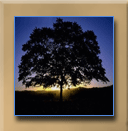Free-living protozoan groups that inhabit soils and natural waters are extremely diverse, not only in their structure but also in the manner in which they feed, reproduce, and move. The amoebas are a diverse group of free-living protozoa that probably evolved from a number of different primitive protozoan ancestors. The amoeboid group includes hundreds of different organisms, ranging in size from about .25 to 2.5 mm (about 0.0098 to 0.098 in). Amoebas are considered the most primitive animals and are classified in the kingdom Protista. All amoeboid organisms have thin cell membranes, a semirigid layer of ectoplasm, a granular, jellylike endoplasm, and an oval nucleus. Some species live on aquatic plants and some in moist ground; others are parasitic in animals and humans.
At least six forms of amoeba are parasitic in humans. Most important of these is Entamoeba histolytica, which causes amebiasis and dysentery. The diseases often occur in epidemics when raw sewage contaminates water supplies or when soil is fertilized with untreated wastes.
Amoebic dysentery is most commonly spread by water or contaminated, uncooked food or from carriers. Flies may carry the cysts to spread the amoeba from the feces of infected persons to food. In many publications Entamoeba histolytica is cited as infecting one tenth of the world population, or 500 million people.
Life Cycle Diagram (Courtesy of the DPD)

Infection by Entamoeba histolytica occurs by ingestion of mature cysts  in fecal contaminated food, water, or hands.
Excystation
in fecal contaminated food, water, or hands.
Excystation  occurs in the small intestine and trophozoites
occurs in the small intestine and trophozoites  are released,
which migrate to the large intestine. The trophozoites multiply by binary fission and produce cysts
are released,
which migrate to the large intestine. The trophozoites multiply by binary fission and produce cysts  ,
which are passed in the feces. Because of the protection conferred by their walls, the cysts can survive days to weeks in the external environment
and are responsible for transmission. (Trophozoites can also be passed in diarrheal stools, but are rapidly destroyed once outside the body,
and if ingested would not survive exposure to the gastric environment.) In many cases, the trophozoites remain confined to the intestinal lumen
(
,
which are passed in the feces. Because of the protection conferred by their walls, the cysts can survive days to weeks in the external environment
and are responsible for transmission. (Trophozoites can also be passed in diarrheal stools, but are rapidly destroyed once outside the body,
and if ingested would not survive exposure to the gastric environment.) In many cases, the trophozoites remain confined to the intestinal lumen
( : non-invasive infection) of individuals who are asymptomatic carriers, passing cysts in their stool.
In some patients the trophozoites invade the intestinal mucosa (
: non-invasive infection) of individuals who are asymptomatic carriers, passing cysts in their stool.
In some patients the trophozoites invade the intestinal mucosa ( : intestinal disease), or, through the bloodstream,
extra intestinal sites such as the liver, brain, and lungs (
: intestinal disease), or, through the bloodstream,
extra intestinal sites such as the liver, brain, and lungs ( : extra-intestinal disease), with resultant pathologic manifestations.
It has been established that the invasive and non invasive forms represent two separate species, respectively E. histolytica and E. dispar,
however not all persons infected with E. histolytica will have invasive disease. These two species are morphologically indistinguishable.
Transmission can also occur through fecal exposure during sexual contact (in which case not only cysts, but also trophozoites could prove infective).
: extra-intestinal disease), with resultant pathologic manifestations.
It has been established that the invasive and non invasive forms represent two separate species, respectively E. histolytica and E. dispar,
however not all persons infected with E. histolytica will have invasive disease. These two species are morphologically indistinguishable.
Transmission can also occur through fecal exposure during sexual contact (in which case not only cysts, but also trophozoites could prove infective).














